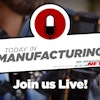As we improve processes and remove unnecessary steps, we often eliminate quality checks and other approvals. Doing so is good, but be careful to ensure that some assurance of proper execution and quality remains intact.
As we assess our businesses and our processes, looking for ways to streamline and save time, we look for those elements that add value to our products and services. As much as we come to depend on quality checks and authority approvals, they don’t actually, by themselves, improve or otherwise add value to our outputs.
As a result, it becomes standard practice, particularly when exercising improvement programs such as Lean, to try and reduce, trim, or otherwise eliminate checks and approvals. They can be tremendously inefficient.
Quality checks often require considerable time, effort, and specialized tools for highly skilled personnel. Authority approvals waste a great deal of time because the person in a position of authority is rarely available when we need him or her, and his or her priorities may not be in favor or rushing our approval along.
The above are good reasons to eliminate or reduce quality checks and authority approvals. If the process is working properly, and the people are well trained and disciplined, then quality checks should always pass and approvals should be equally verifiable and easy to execute with a minimum of explanation or discussion.
The practice is good and it definitely makes a business more efficient. Unfortunately, not every quality check, approval, or review should be eliminated. There are times when, even though it is not directly value added, the checks and balances should remain. In particular, they should remain in order to ensure that they continue to be unnecessary.
Let me provide an example of what I mean. Let’s take a simple drawing control process. A peer review of a drawing is standard practice. There are nearly always two sets of initials on engineering drawings, a “Drawn by” and a “Checked by” set. Also, an additional approval, such as by a manager or principle engineer, is typically necessary to “release” the drawings into official circulation.
That seems like a good opportunity to reduce and remove some unnecessary, non-value-added steps. Before doing so, remember that some things naturally change over time. Human behavior, particularly by humans under pressure to execute more quickly, or by humans that change roles periodically, is something that is guaranteed to shift.
The purpose of the peer check is usually to review the drawing for correct execution according to drawing and drafting standards, general good practice, and obvious mistakes or oversights. The purpose of the release approval is usually to make sure that everything is in order and compliant with the process.
In some environments, the peer check and/or the release approval are “rubber stamp” processes where the checker/approver initials without really reviewing the material. Where this is the case, we may as well remove the process steps and be honest with ourselves about what’s happening.
However, the better thing to do may be to bring the checks discipline back into order and to leave the checks in the process. Here’s why.
As you might agree, humans are prone to mistakes, especially rushed humans. We also have a habit of adjusting our behavior depending upon what we perceive to be important. If we perceive that discipline and precision in drawing practices are not important, but saving time is, we will execute with less discipline and precision in order to execute with less time. It’s natural.
Unfortunately, sloppiness in engineering drawings can be extremely expensive. Suppose that an innocent oversight on a drawing’s bill of materials calls out an adhesive with the additional qualifier, “or equivalent.” What does that mean? How should a production team or supplier determine equivalency?
It could mean equivalent holding strength, equivalent active ingredients, or simply a similar general category of adhesive type. What if someone chooses an inappropriate adhesive without realizing it and suddenly there are many returned products, or a customer gets hurt?
I’m just trying to make a point. There are times when it is not best to eliminate checks or approvals. Generally, we want to keep them in place anywhere that the performance of people or equipment might change if not monitored to ensure consistency. Here are some examples:
- Office or people-processes where a standard of discipline or skilled execution is expected or necessary.
- Manufacturing processes where machines or settings can be adjusted or are adjustable.
- Manufacturing processes where equipment can wear.
- Assembly processes where a defect does not prohibit further processing and can pass through undetected.
- Processes where the initial equipment or inputs change between runs or orders.
- Any process that could lead to a failure to meet safety or regulatory expectations.
The last item on the list is particularly important. Businesses have gone out of business for failing to meet safety and regulatory expectations, even when no one was hurt, because they cannot be trusted. Do not completely remove checks and balance process elements from your safety and regulatory procedures.
What we can and should do is streamline our ability to make the checks and authorize proceedings with the least waste of time and energy. For the example of drawing checks, visual checklists, templates, and list of do’s and don’ts make life a great deal easier. To eliminate waiting for both checks and approvals, make a priority system set an expectation that reviews and approvals shall happen the same day.
For equipment-centered processes or assembly processes, set the checks at critical points to ensure the least amount of down-steam processing is done on a component before a critical error can be identified. Again, endeavor to make the quality check as effortless, but capable, as practical. Be sure to assess if it is less expensive to scrap a part than to check a part. Doing so can completely change a quality inspection plan.
By all means, reduce the effort and waiting time for checks and approvals. Also, the easier they are to execute, the easier it is to ensure they take place honestly and consistently. Be careful about eliminated too many checks. Often the best way to ensure long-term performance is to monitor that performance consistently.
Do not allow safety or regulatory mistakes to occur. Make sure that mistakes, oversights, or defects that could cause a great deal of down-stream cost are not allowed to occur.
As we streamline our businesses and our processes we must manage a delicate balance. We must eliminate unnecessary time and cost. But we must also ensure that quality execution and expectations are maintained. To do the latter, a minimum of checks and balance must remain.
Stay wise, friends.
If you like what you just read, find more of Alan’s thoughts at www.bizwizwithin.com.






















